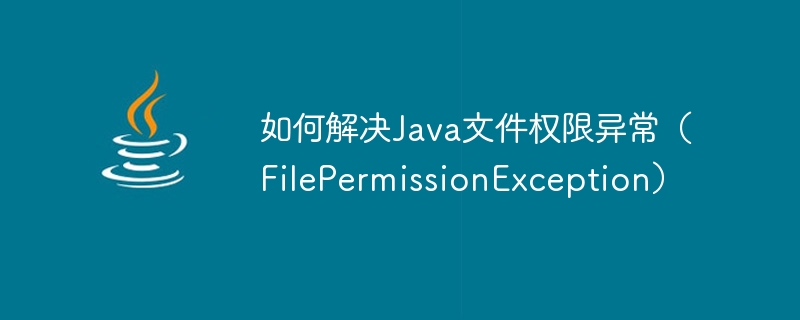

How to solve Java file permission exception (FilePermissionException)
In Java programming, we often involve operations on files, such as reading, writing, and deleting wait. However, sometimes we may encounter file permission exceptions (FilePermissionException), which may prevent our program from running normally. This article describes some common workarounds and provides corresponding code examples.
File file = new File("file.txt");
if (file.canRead() && file.canWrite()) {
// 文件有读写权限,可以进行操作
// 代码逻辑...
} else {
// 文件权限不足,需要进行相应处理
// 代码逻辑...
}File file = new File("file.txt");
file.setReadable(true); // 设置文件可读
file.setWritable(true); // 设置文件可写
if (file.canRead() && file.canWrite()) {
// 文件权限修改成功,可以进行操作
// 代码逻辑...
} else {
// 文件权限修改失败,需要进行相应处理
// 代码逻辑...
}try {
// 文件操作代码...
} catch (FilePermissionException e) {
// 文件权限异常处理逻辑...
} catch (IOException e) {
// 其他IO异常处理逻辑...
} catch (Exception e) {
// 其他异常处理逻辑...
}By using the try-catch statement, we can capture and handle file permission exceptions and other possible exceptions, ensuring that the program can correctly handle exceptions when they occur. .
File file = new File("file.txt");
try {
AccessController.checkPermission(new FilePermission("file.txt", "read,write"));
// 文件权限检查通过,可以进行操作
// 代码逻辑...
} catch (AccessControlException e) {
// 文件权限不足,需要进行相应处理
// 代码逻辑...
}By using the AccessController class, we can control access to protected resources in the program to ensure that the program has sufficient permissions when operating files.
Summary
Java file permission exception (FilePermissionException) is one of the problems we often encounter in file operations. This article introduces some solutions, including checking file permissions, modifying file permissions, using try-catch statements to handle exceptions, and using AccessController authorization. By using these methods, we can better handle file permission exceptions and ensure the normal operation of the program.
The code examples only demonstrate some common situations, and the actual situation may be more complex. In actual development, we also need to choose appropriate solutions based on specific needs and situations, and perform corresponding exception handling. I hope this article has provided some help in solving Java file permission exceptions.
The above is the detailed content of How to solve Java file permission exception (FilePermissionException). For more information, please follow other related articles on the PHP Chinese website!




